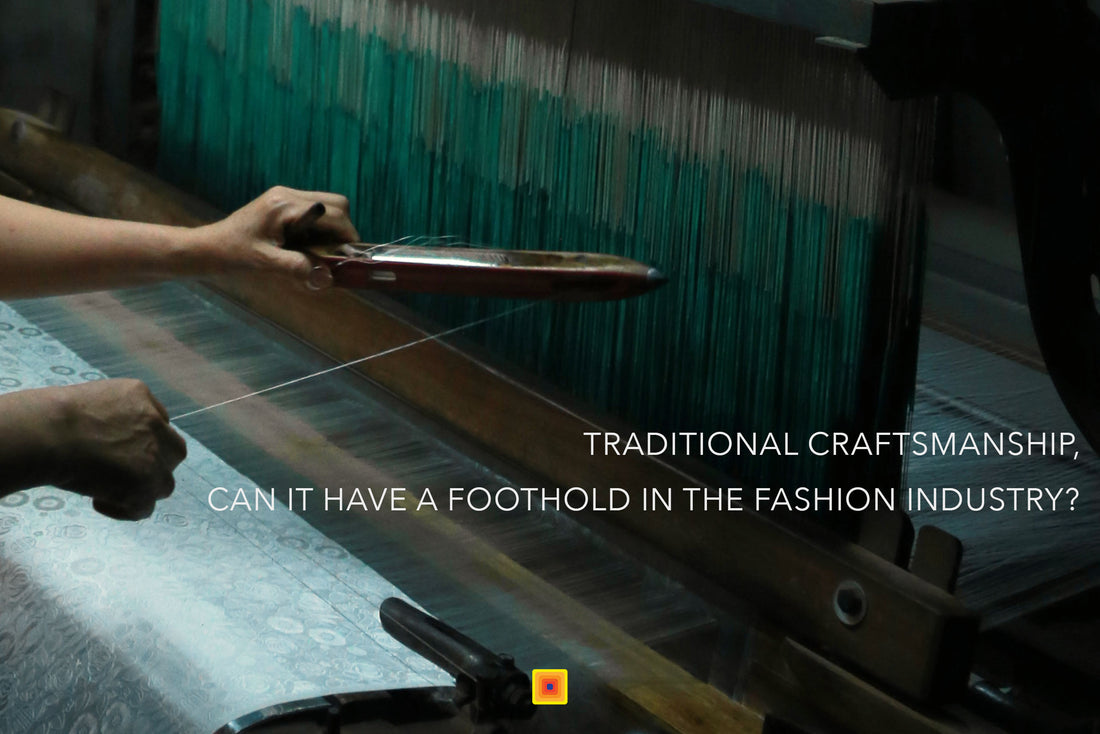Asian traditional craftsmanship - Can it have a foothold in the fashion industry?

Share
For the past century, the fashion habits of Western countries have evolved and gave birth to Fast Fashion : a way of producing, transporting, selling and consuming fashion products having dire human, moral and ecological consequences. Those can no longer remain ignored in favor of quick renewal of styles and lower prices of products.
Sustainable lifestyle and its fashion side clearly stands on the over side of the spectrum of the fashion industry. It remains to be implemented in the Western markets but recent ecological trends show that demand would be high in that regard.
Parallel truths
Ethical and sustainable fashion has already been practiced by many Asian cultures over centuries. The Asian continent is home to many of the world’s first civilizations and the most diverse ethnic groups, each with their own repertoire of fine techniques in weaving, knitting, embroidery, natural dyeing, plant-based treatment and finishing, all perfected over thousands of years. Traditional textiles are usually made with minimally-processed natural fibres such as cotton, linen, silk, hemp and wild grasses.
Unfortunately Asian’s original fashion traits are clearly underrepresented in the runways, magazine or ad campaigns; whereas countries like: China, Vietnam, Bangladesh or even Cambodia ..., have long been tied to the concept of fast fashion as those economies host millions of sketchy and dangerous fast fashion factories with detrimental and alarming impacts on fashion, human welfare and the overall environment.

Traditional craft villages located in these countries suffer a great deal from coexisting with their fast fashion counterparts. Yet, the most ethical thing devoid in artisanal craftsmanship is the income of the artisans. Multinational companies that outsource mass production to Asia started to increase the wages of fast fashion factory workers according to third world country standards. Inside the producing countries, the lack of demand and funding made inhabitants of craft villages abandon their home to seek for more lucrative jobs.
Therefore fast fashion factories drained and continue to drain local artisanship workforce, putting craft villages at risk of disappearing forever. Moreover, artisanal craftsmanship being mostly hereditary, the techniques to be taught and transferred from a generation to the next within a family may go extinct. These techniques demand diligence and take years to master, which is also a drawback for the general mindset of the current young population. Thus, elder generations seems unable to perpetuate their craft know-how-to with no successors willing to learn. Craftsmanship could forever die with the oldest generation still in activity.
Focus on some craftsmanship villages in Vietnam
Our team have visited a few craftsmanship silk villages in the Northern part of Vietnam and had the chance to meet weaver Phan Thi Thuan. She gathers the stems from her village’s lotus paddy to produce a splendid lotus silk that is soft, aesthetically pleasing and organic.

There is also Nha Xa silk village (Ha Nam province, Viet Nam), famous for their smooth and colourful mulberry silk made from natural raw materials with a lot of experience and skills gathered by many generations.

In another small silk village called Tân Châu located in the An Giang region, the villagers grows mac nua to craft dye from their fruits: its yellow liquid when crushed down turns black during oxydation trigger by contact with air at warm temperatures.

In Lao Cai (Viet Nam), the La Chi are an ethnic minority who live mainly in a few communities in the lower district of Bac Ha. This ethnic minority has a very specific cultural identity. One of the outstanding particularities of the La Chi people is the growth of cotton and weaving it into fabrics used for traditional costumes.


People are polishing the coarse fibres. These steps often involve a large number of people.

Fabric drying
Ethical fashion benefits those working along the supply chain and creates a better future for everyone socially, culturally and economically. After industrialization, we have grown used to the instant gratification of extremely cheap clothing available at the click of a button and the humans who make these clothings and the planet from which finite resources are being exploited become an afterthought.
One obvious solution is to create more demands and funds to help increase incomes for people works in traditional craft villages and preserve the these precious knowhow. The most important thing about protecting traditional craft practices is that we are preserving a heritage, an identity, thus a legacy.
Independent Vietnamese brands whose work toward promoting their culture by working with Vietnamese artisans in craftsmanship villages
The mission that young Asian designers are carrying on their shoulders is heavy, but they are well aware of it, and us too, a collective that represents Vietnamese brands with designers who work with passion and responsibility to preserve their culture. These brands are working closely with ateliers and artisans from their hometown, modernising it with their own styles and ideals. These brands bring an Asian identity that hosts a double originality - an ethnicity history and personal identity.
Moniq STUDIO

Introducing Moniq STUDIO, an Hanoi based independent slow-fashion brand founded by Mrs.Thư Madelin in 2009.
Moniq STUDIO offers eye-catching and contemporary attires based on traditional Vietnamese clothes, youthful and dynamic, yet enhance the original value. All items are handmade from silk from Nha Xá silk village and by Vietnamese artisans.
Instagram: @moniqofficial22
TRỊNH FASHION

TRỊNH FASHION is a long standing fashion brand, founded by a Hanoi based designer, Trinh Bich Thuy, who has a specific aesthetic toward her root, the city where she was born, Ha Noi. All of her collections use material from craftsmanship villages around Hanoi, where she was born. She also uses a lot of traditional Vietnamese technique in her designs like: hand quilting and hand embroidery.
Instagram: @trinhfashion
gamme from gammeCOLLECTIVE
A garment line from gammeCO offering high-end yet timeless item made from natural silk from craftsmanship silk villages in Vietnam like: Nha Xa, My Duc,…

“Less is more”. While striving forward to create, we shall look back to realize, it's less about inventing and adding more, but more about loving and cherishing the values and diversity we already have. That is the true meaning of ethical and sustainable life.
Author: Luong Nguyet Khanh
Edit: Ha Pham and Kha Han Nguyen
Source photos: gammeCOLLECTIVE's photo stock and Magazine: ethnic and mountainous





